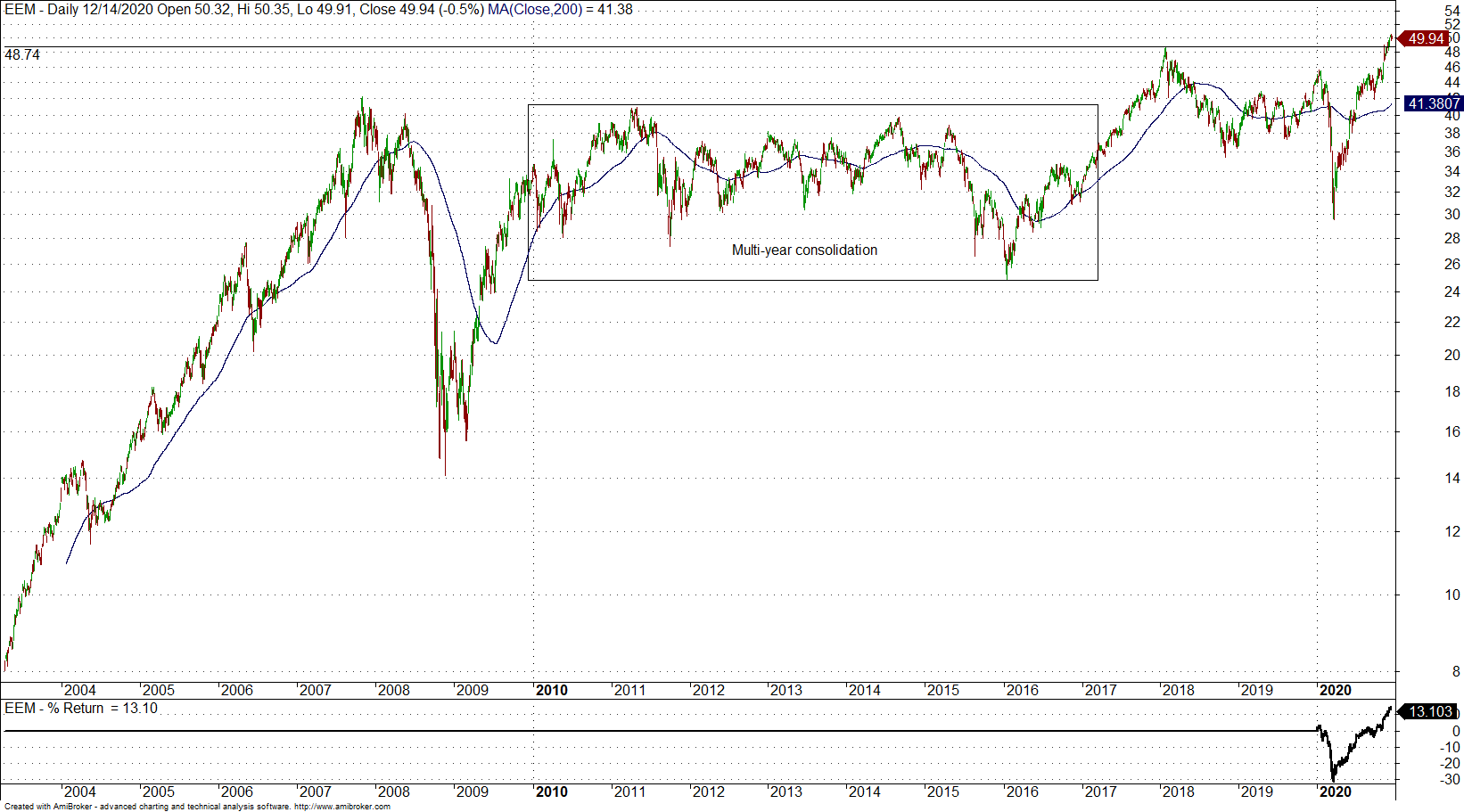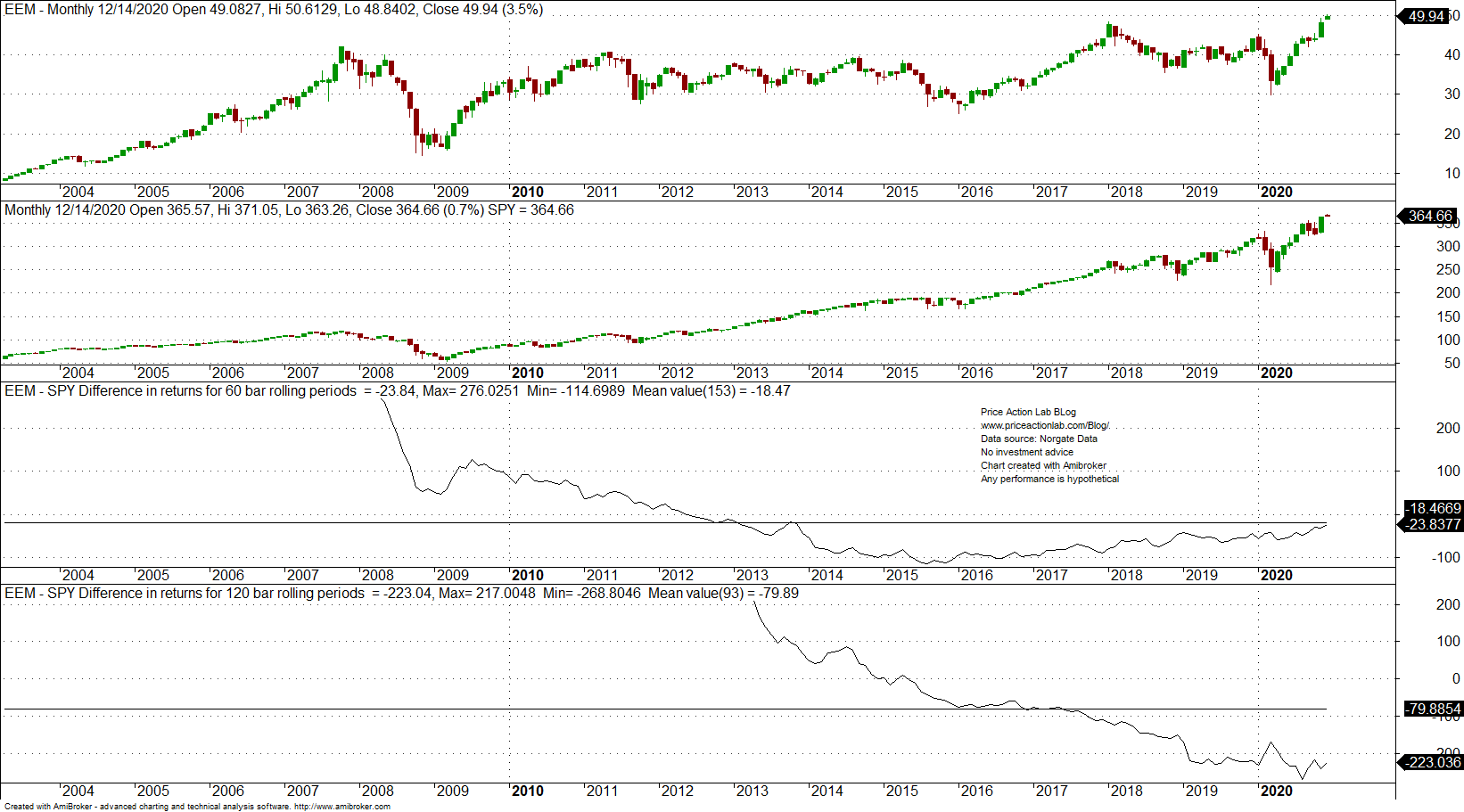Emerging Markets moved to new all-time highs earlier this month after multi-year consolidation followed by wide swings. The gains may be attributed to recent US dollar weakness. In fact, a long position in Emerging Markets may be equivalent to a short US dollar position.
The Emerging Market ETF (EEM) broke to new all-time highs earlier this month and it is up 13% year-to-date.
A significant multi-year consolidation from 2010 to 2017 was followed by new highs and by another fall to the March lows of this year. Then, along with US markets and supported by a weakening US dollar, EMM made new all-time highs earlier this month.
Since 2009, EEM has grossly underperformed SPY total return, as shown in the relative performance chart below:
Total return for SPY since 2009 is 422% versus 119% for EEM. The recent break to new all-time highs is nothing to celebrate for Emerging Markets investors and especially hedge funds that invested in those markets a few years back hoping to beat S&P 500 total return. That trade was quite disappointing for many.
The monthly chart below shows the difference of 5-year (60 months) and 10 years (120 months) of total returns between EEM and SPY.
Since EEM inception, the difference for 5-year and 10-year returns started at 276% and 217%, respectively. Then, a downtrend started due to multi-year consolidation and difference for 5-year and 10-year returns reversed sign now stands at -23% and -223%, respectively. In other words, longer-term investors in Emerging Markets have seen virtually no gains during a time US markets were delivering exceptional returns.
It could be the case that Emerging Markets gains are related to US dollar losses. Correlations may be spurious due to conflating factors but the chart of the 120-day correlation between EEM and UUP suggest that.
The recent spike in the correlation to about +0.6 was followed by a sharp fall to about -0.52 with simultaneous rise of EEM to new all-time highs.
In fact, investing in Emerging Markets may be equivalent to holding a short US dollar position with a small leverage. However, correlations are dynamic and due to many conflating factors they can change suddenly and any conclusions derived from the past may no longer apply.
Charting and backtesting program: Amibroker
Data provider: Norgate Data
If you found this article interesting, you may follow this blog via push notifications, RSS or Email, or in Twitter











